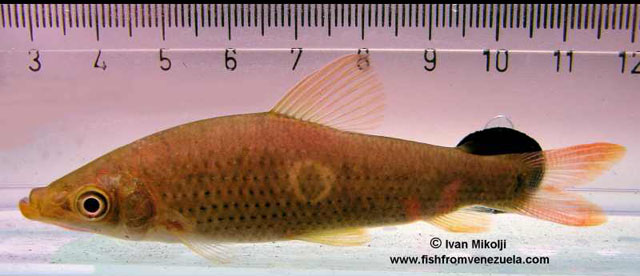| Anostomidae (Headstanders) |
| 18.8 cm TL (male/unsexed) |
|
benthopelagic; freshwater |
| South America: Brazil, Guyana, Peru (Ref. 36801), Ecuador (Ref. 91907) and Argentina (Ref. 9086). Recorded from Amazon River basin (Ref. 36801); Rio Guaporé in Brazil, Essequibo and Rupununi Rivers in Guyana (Ref. 91907). |
|
Anal soft rays: 11-12. Can be diagnosed by having the following characters: dark transversal bars on dorsum present; dark spots absent on the center of each body scale in some specimens; usually two, sometimes three or four midlateral dark blotches on body; angle of the dorsal and ventralmost radii of body scales between 110° and 180°; and cranial fontanel partially closed (Ref. 91907). |
| Adults are found in schools of 10-50 specimens in deeper water. They feed on plants (Ref. 13371). Distinct pairs breed on densely grown weedy places (Ref. 205). |
|
Least Concern (LC); Date assessed: 26 June 2020 Ref. (130435)
|
| harmless |
Source and more info: www.fishbase.org. For personal, classroom, and other internal use only. Not for publication.

